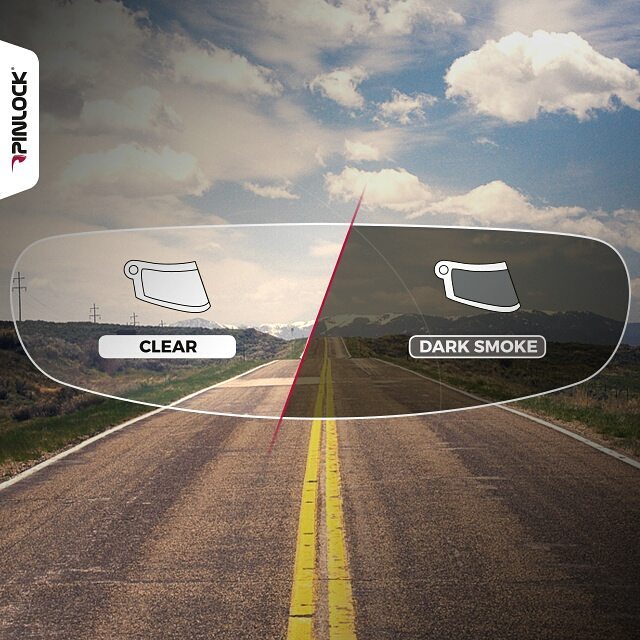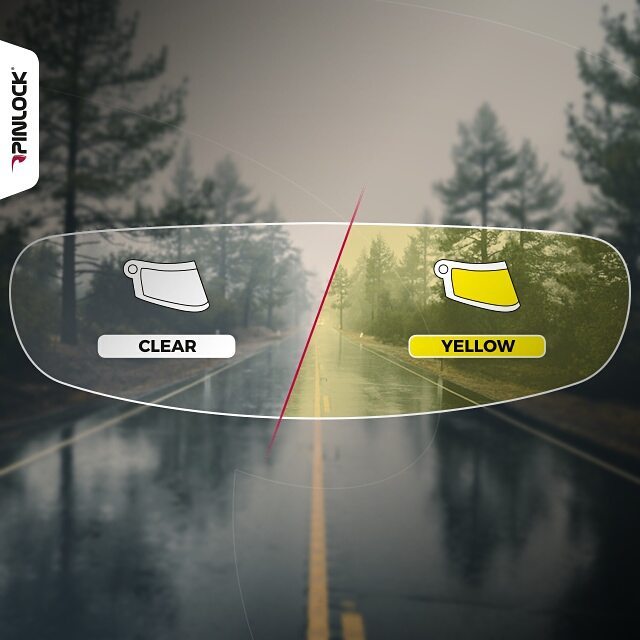Pinlock visors
One of the most annoying things while riding your motorcycle: a fogged up visor. Thanks to the Pinlock anti-fog system, this is a thing of the past. What is it and how does it work? We explain it.
Why using a pinlock visor?
When it starts to get colder you will quickly notice by the fogged up visor of your helmet. There is nothing more irritating than having to open your visor on a cold morning whilst riding, to catch a glimpse of what’s actually going on in front of you on the road. This is all well and good for as long as it lasts, because you will have teary eyes from the cold within a matter of minutes.
There is a solution for this problem: it’s called a Pinlock anti-fog lens. This is a small flexible visor which can be fitted on the inside of the helmet visor. This creates a double glazing effect, which significantly decreases the difference in temperature between the inside and the outside of the visor. This way, a foggy visor is a thing of the past.
How does it work?
The Pinlock lens consists of an organic and transparent material, which is equipped with a silicone edge. This lens is locked into place between the plastic pins at both sides of the helmet visor. The silicone edge ensures that the lens is airtight. Now there is a thin piece of air between the Pinlock lens and the helmet visor. This ‘air chamber’ works a little bit like the ‘double glazing’ principle. The difference in temperature between the inside and the outside of the visor is kept to a minimum. This makes sure that your visor can remain closed, even on cold and damp days.


How to install a Pinlock lens
Many new helmets come with a Pinlock anti-fog lens in the box these days. The only thing you need to do is install the Pinlock in the visor. The easiest way to do this is by removing the visor from the helmet first. Most helmet manufacturers have a quick lock visor system, so this step is usually fairly easy. Take the Pinlock out of its packaging and check on which side the silicone edge is located. Do not touch this edge and do not place the lens down on this edge, it is rather sensitive. The raised edge will be placed against the inside of the helmet visor.
Take the helmet visor and press the one of the sides against your body, bending the visor to get it as straight as possible. Both ends of the visor have a pin, this is where the Pinlock lens needs to be fitted. The easiest way to do this, is by first fitting the side closest to your body. Keep the visor as straight as possible and fit the lens into the other pin. The Pinlock lens is probably bulging now. Place the helmet visor down on a table and push the Pinlock lens towards the inside of the visor. Check if it is pressing against the visor everywhere and it’s done!
Is the Pinlock not tightly pressed up against the helmet visor? Try popping out the plastic pins, turning them – and refitting the Pinlock lens.
This video makes installing your Pinlock completely easy:
This is how the Pinlock visor was invented
Derek Arnold is an English inventor who personally experienced the problem of a fogged up visor. Over twenty years ago during a race on the TT Circuit in Assen (the Netherlands), he got the inspiration to rid the world of this problem once and for all. Professional motorcyclists used separate adhesive layers on the outside of the visor to keep the visor clean and fog free.
He started developing something similar, but then for the inside of the helmet. This concept grew up to be the Pinlock system that we know today. Nowadays Arnold does business with almost every helmet manufacturer and the motorcycle world could not live without the anti-fog system anymore. Another fun fact to mention is that the Pinlock anti-fog visors are developed and manufactured in the Netherlands, to be shipped all over the world.
Find your pinlock visor at FortaMoto
Looking for a pinlock visor? At FortaMoto you'll find a complete range of visors for your helmet.
